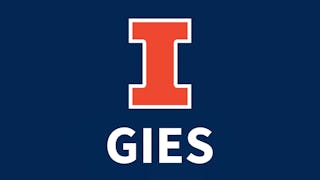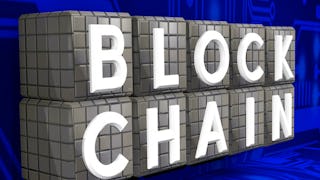This fourth course of the Blockchain specialization provides learners with an understanding of the broader blockchain ecosystem. Learners are introduced to other blockchain platforms, details of two decentralized application use cases, and challenges such as privacy and scalability. They are prepared to discuss permissioned blockchain architectures of Hyperledger and Microsoft Azure's blockchain as a service model and analyze the Augur and Grid+ decentralized application platforms. Course material includes emerging alternative decentralization models such as IPFS and Hashgraph, challenges in broader blockchain adoption, and continuous improvement solutions.


Gain next-level skills with Coursera Plus for $199 (regularly $399). Save now.

Blockchain Platforms
This course is part of Blockchain Specialization

Instructor: Bina Ramamurthy
42,515 already enrolled
Included with
(1,079 reviews)
Recommended experience
What you'll learn
This fourth course of the Blockchain specialization provides learners with an understanding of the broader blockchain ecosystem.
Skills you'll gain
Details to know

Add to your LinkedIn profile
18 assignments
See how employees at top companies are mastering in-demand skills

Build your subject-matter expertise
- Learn new concepts from industry experts
- Gain a foundational understanding of a subject or tool
- Develop job-relevant skills with hands-on projects
- Earn a shareable career certificate

There are 4 modules in this course
In this module, we will explore the contributions of two major technology organizations: The Linux Foundation’s Hyperledger Fabric and Microsoft Azure’s Blockchain as a Service.
What's included
11 videos7 readings6 assignments
We will explore two Dapps: Augur and Grid+ which are both implemented on Ethereum. You, too, can be a participant in these Dapps platforms, if you wish to do so.
What's included
5 videos2 readings3 assignments
We will explore just a few of the important challenges and solutions that are continuously innovating Blockchain.
What's included
5 videos4 readings5 assignments
We will explore the Interplanetary File System (IPFS) that aims to address the decentralized data storage problem and Hashgraph, which aims to solve the decentralized trust problem.
What's included
7 videos5 readings4 assignments
Earn a career certificate
Add this credential to your LinkedIn profile, resume, or CV. Share it on social media and in your performance review.
Instructor

Explore more from Software Development
 Status: Preview
Status: PreviewUniversity of Illinois Urbana-Champaign
 Status: Free Trial
Status: Free TrialUniversity at Buffalo
 Status: Free Trial
Status: Free TrialLearnQuest
 Status: Free Trial
Status: Free TrialUniversity at Buffalo
Why people choose Coursera for their career




Learner reviews
1,079 reviews
- 5 stars
68.88%
- 4 stars
22.68%
- 3 stars
6.20%
- 2 stars
1.29%
- 1 star
0.92%
Showing 3 of 1079
Reviewed on Dec 15, 2019
The course was quite resourceful holistically. Connection with instructor was lacking due lack in eye contact ; almost as if the material is being read out from monitor.
Reviewed on Jul 9, 2020
The content for IPFS hashgraph is a bittooadvanced. for non-cs major, but the final project is easy to follow and enabled me to understand IPFS better than just wathingthe videos.
Reviewed on Dec 26, 2018
It is very practical, and loved the Augur, Grid+, and Escrow which is not usually mentioned in any other blockchain courses
Frequently asked questions
This course is for anyone interested in a broad overview of the fervent developments taking place in the blockchain landscape, the practical applications that illustrate unique features of blockchain technology – namely decentralization, disintermediation and distributed immutable ledger – and approaches for ongoing improvements in privacy and scalability. It provides learners with an opportunity to learn about the permissioned blockchain in Hyperledger Fabric, the samples of the disruptive Dapps in energy retailer (Grid+) and prediction markets (Augur) and other decentralized developments in IPFS and Hashgraph that may help enrich the blockchain technologies.
Review of the content of the first course (Blockchain Basics), second course (Smart Contracts), and third course (Decentralized Applications) of this specialization are prerequisites. Knowledge of at least one high-level programming language is required.
A laptop or a desktop of this specification: 64 bit machine with minimum 4Gb ram, 10Gb free space and Windows 7 or above , or ubuntu 16.04 or Mac os x 10.0+.
More questions
Financial aid available,







